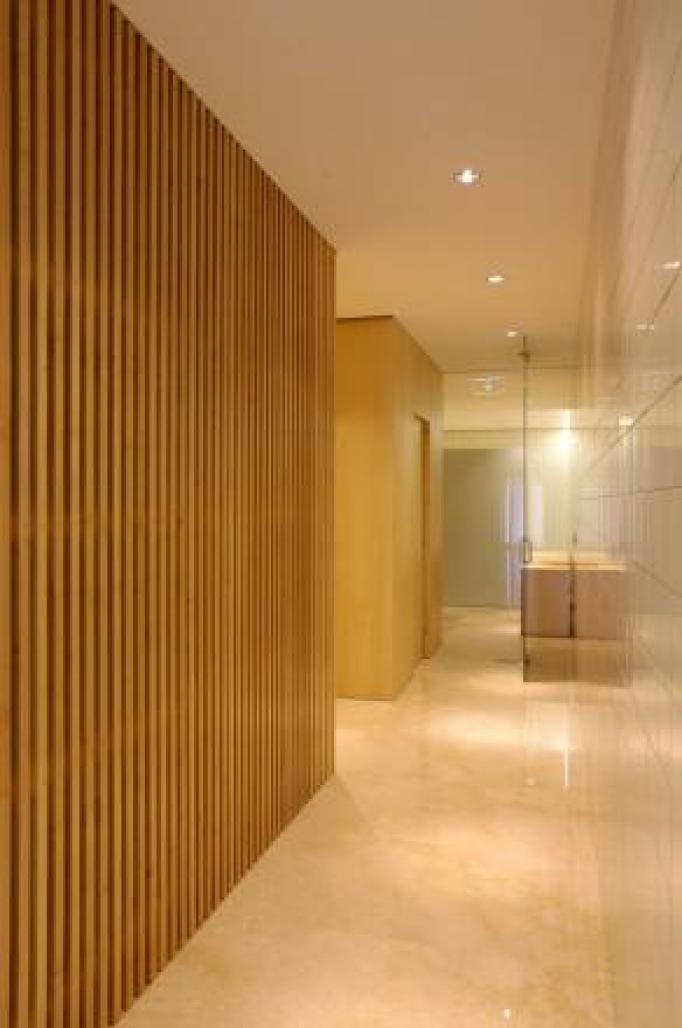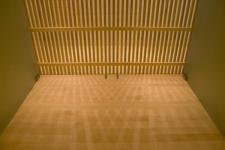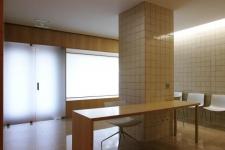This work is located on the ground-floor of an inhabitable and commercial building placed in Street Dr. Francisco Sá Carneiro, Vila Nova de Gaia. It is destined for a gynaecology and obstetrics clinic. It owns a single entrance with two access possibilities: one, directly from the public pavement and going through a garden yard; the other one, through a covered gallery that goes around all the ground-floor level of the building.
The functional organisation derives from an interior circulation in a “T” shape that articulates two poles with an intermediate area. The hall and waiting-room area is characterised by the natural light presence, coming through the glazes and two large columns, one of them placed in the middle of the space itself.
The medical assistant area and observations room, both of restricted access, are in the opposed pole to the entrance one.
Some surfaces are filled up with cupboards and light sycamore wood bookcases, though most walls and pre-existent structural elements, that limit and determine the space, are covered with white handmade glazed tile. The single materiality of these surfaces is the continuity element of the interior spatial structure, an identification code of the limit and also an element used for the public’s better orientation in the inner space. On the other hand, this limit is not a hindrance, for it reflects the scanty natural light – captivated only through the façade glaze – to more interior spaces. The sub-division is done with sycamore wood panels. This way the effect of the luminosity transfer between distinct surfaces is mutual and no material is dominant.
The fusion concept here rehearsed relates directly the purpose with one basic component of the program – place for antenatal cares - establishing the proximity between distinct materials and architectonic elements, in correspondence with several cultures {Mediterranean, Scandinavia an Oriental} in a single meeting place. It is intended to make possible a contact experience with the bright space that hence results, bearing in mind at the same time that profitable encounters of different cultures are also reflected in human genes.
2003
2006










